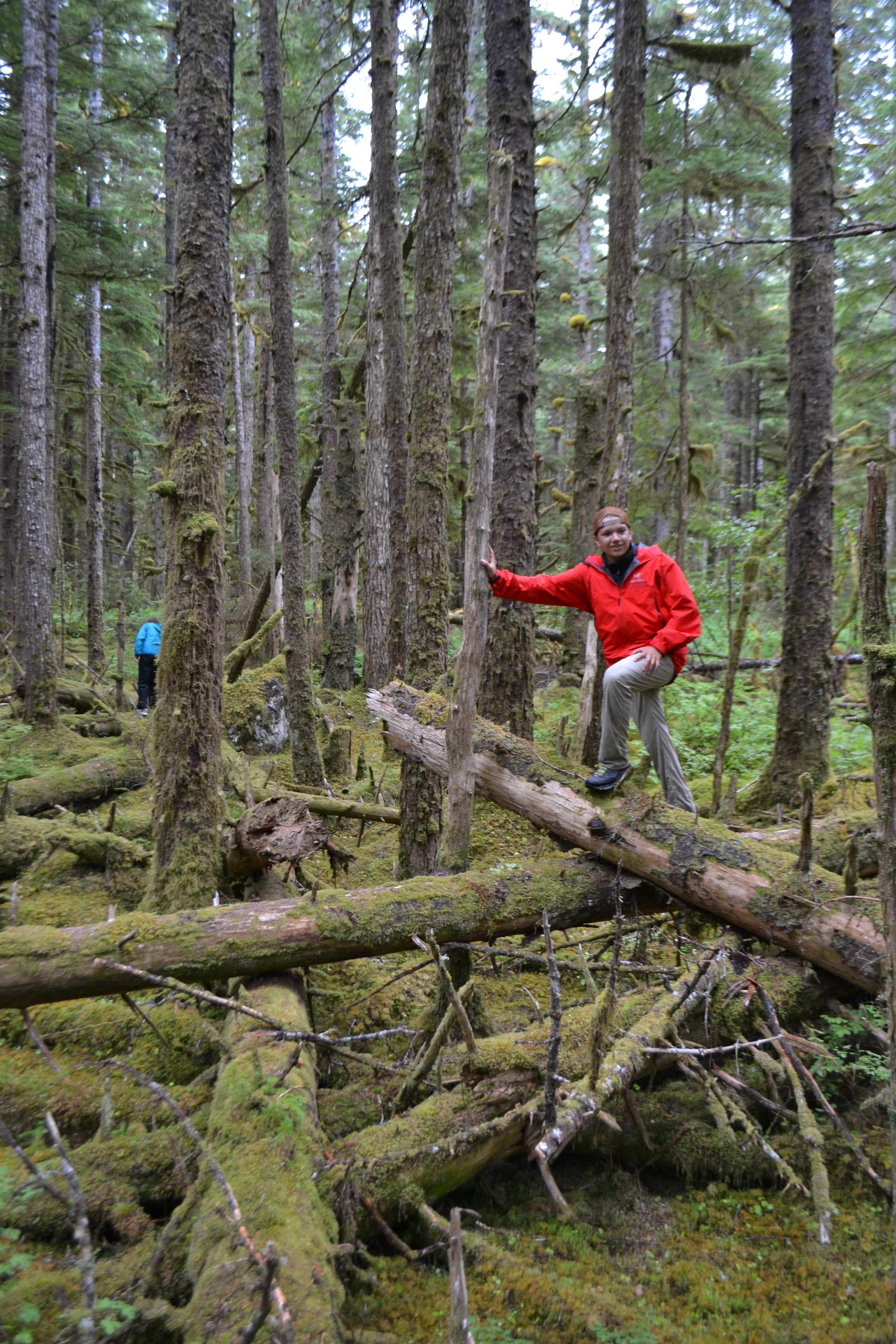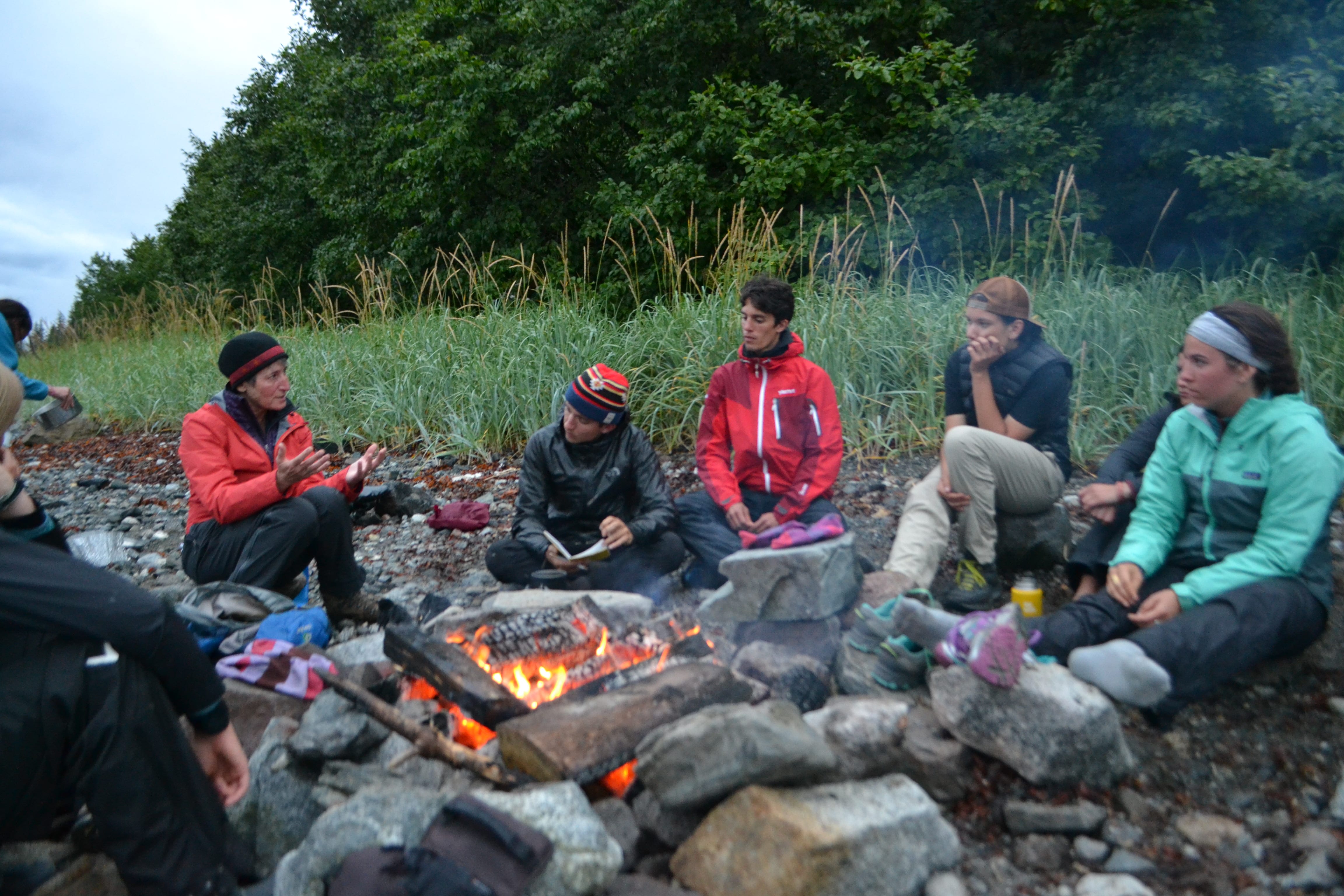
HIA tribal interpreter, Paula, leads us on an ethnobotany walk in the morning. Woven into her explanations of basic ethnobotany were personal heartfelt stories of gathering with relatives, in various sites around Yakutat and Hoonah–again emphasizing Tlingit path geographies and the importance of subsistence to “sense of being.” Her evening program at Xunaa Shuka Hit was perhaps even more emotional and heartfelt as she explained the deep connections of her ancestors to Sit’ Eeti Geeyi.
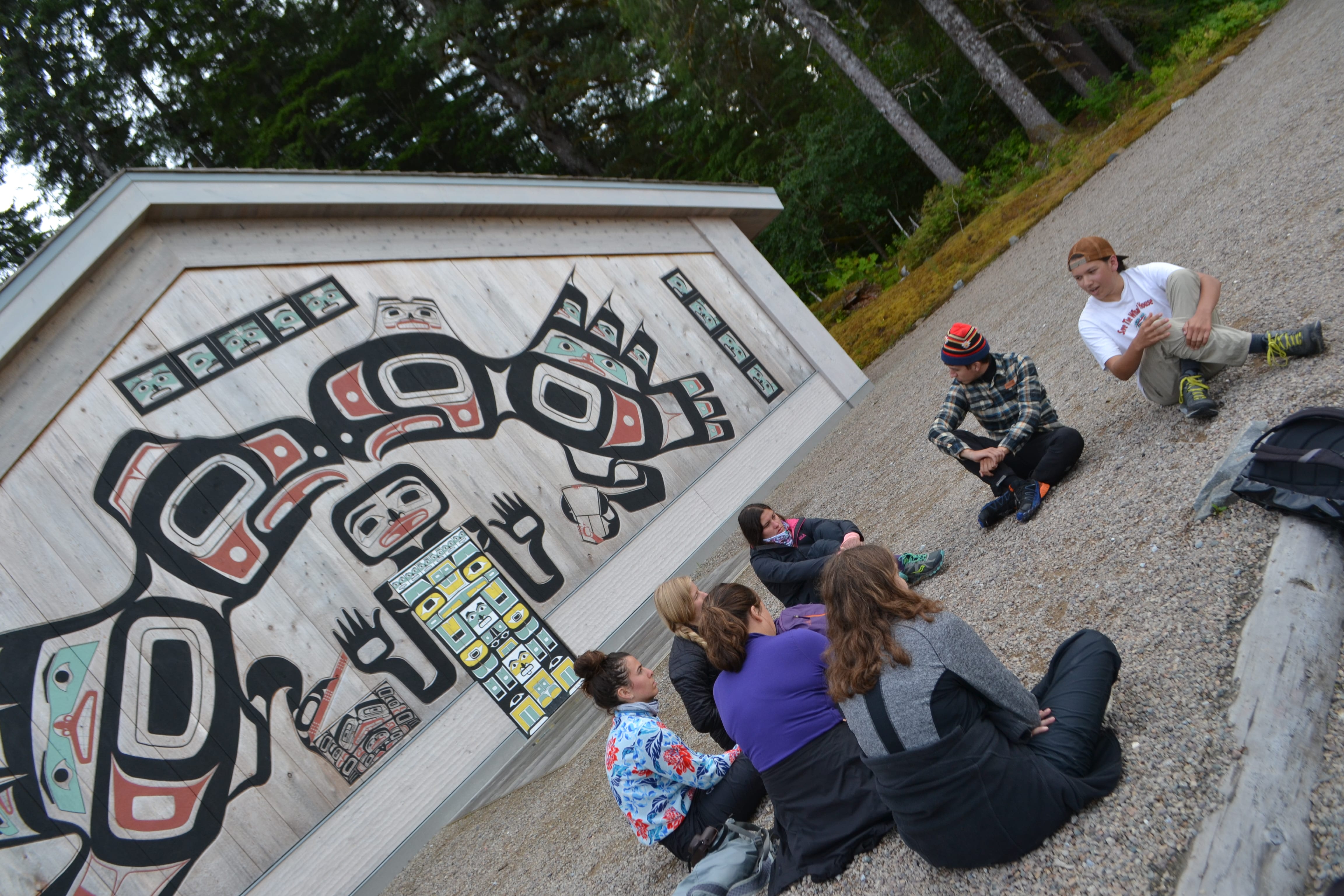
Owen Oliver (Quinault/Chinook), steeped in the traditions of northwest coast art through his father’s work and native heritage, leads an afternoon discussion on formline traditions, and the blending/appropriation of old into new. He is careful not to tell the stories in the artwork around us at Xunaa Shuka Hit, but rather to use elements as examples to illustrate his points. At times he would ask us to speculate about what we saw in the artwork behind us, however, forcing us to look carefully at detail.
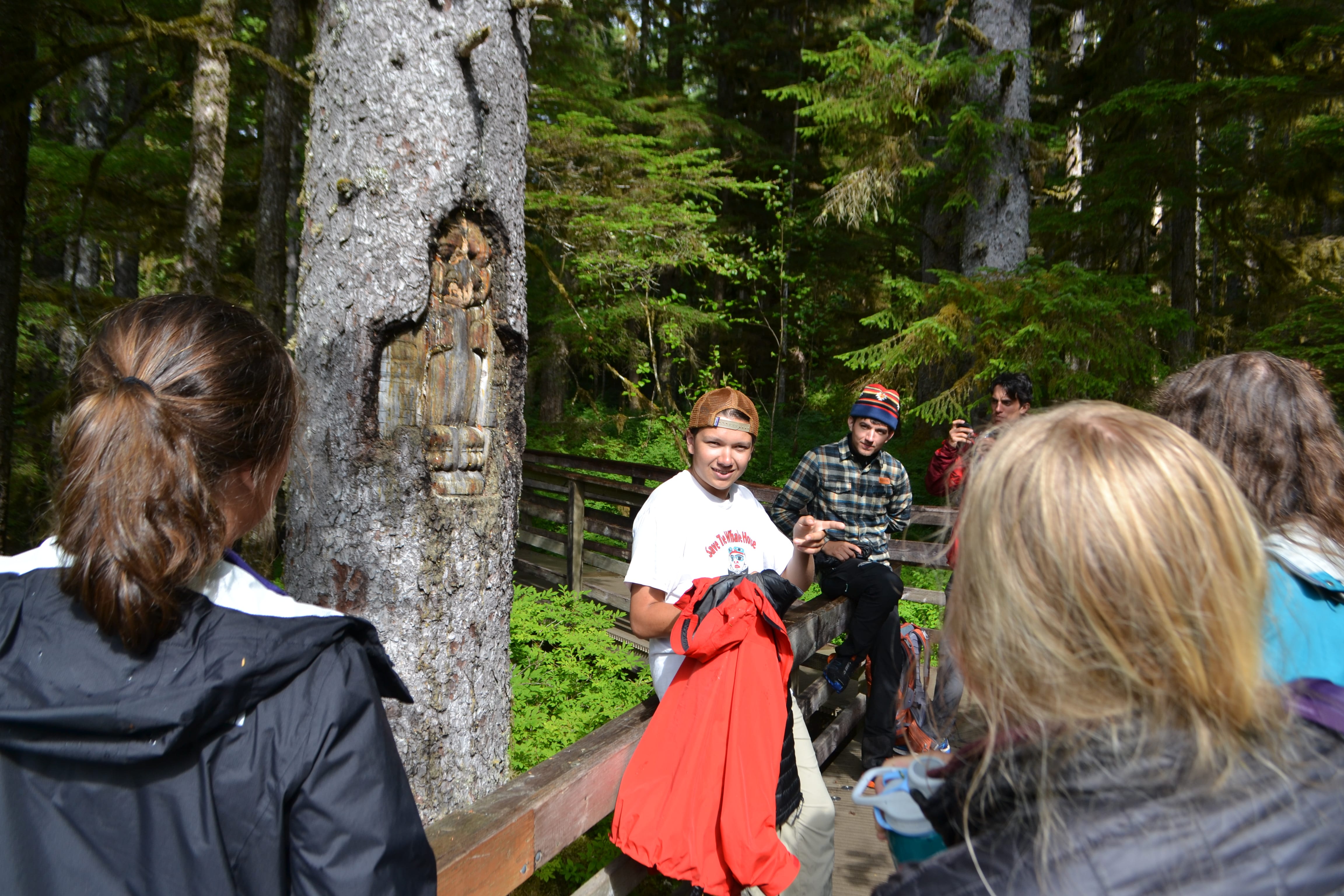
Owen begins his discussion at a culturally modified tree in the forest, as we learn how to tell the difference between raven and eagle in formline design.

Shawna exploring the mature spruce/hemlock forest on the moraine behind Bartlett Cove. These are the oldest forests in Glacier Bay National Park, perhaps no older than 200 years. When the Vancouver Expedition tried to enter the bay in ~1793, an ice front still protruded into Icy Strait and the area where this forest stands likely would have been under ice, or reduced to a pile of rocky rubble and outwash gravel. Indeed, we found a massive glacial erratic not far from here. Forests existed in ice-free patches, however, even during the Little Ice Age whose glaciers retreated almost as quickly as they appeared. Fossil wood can be found around the Bartlett Cove intertidal zone where the glaciers bowled over living trees on their advance.
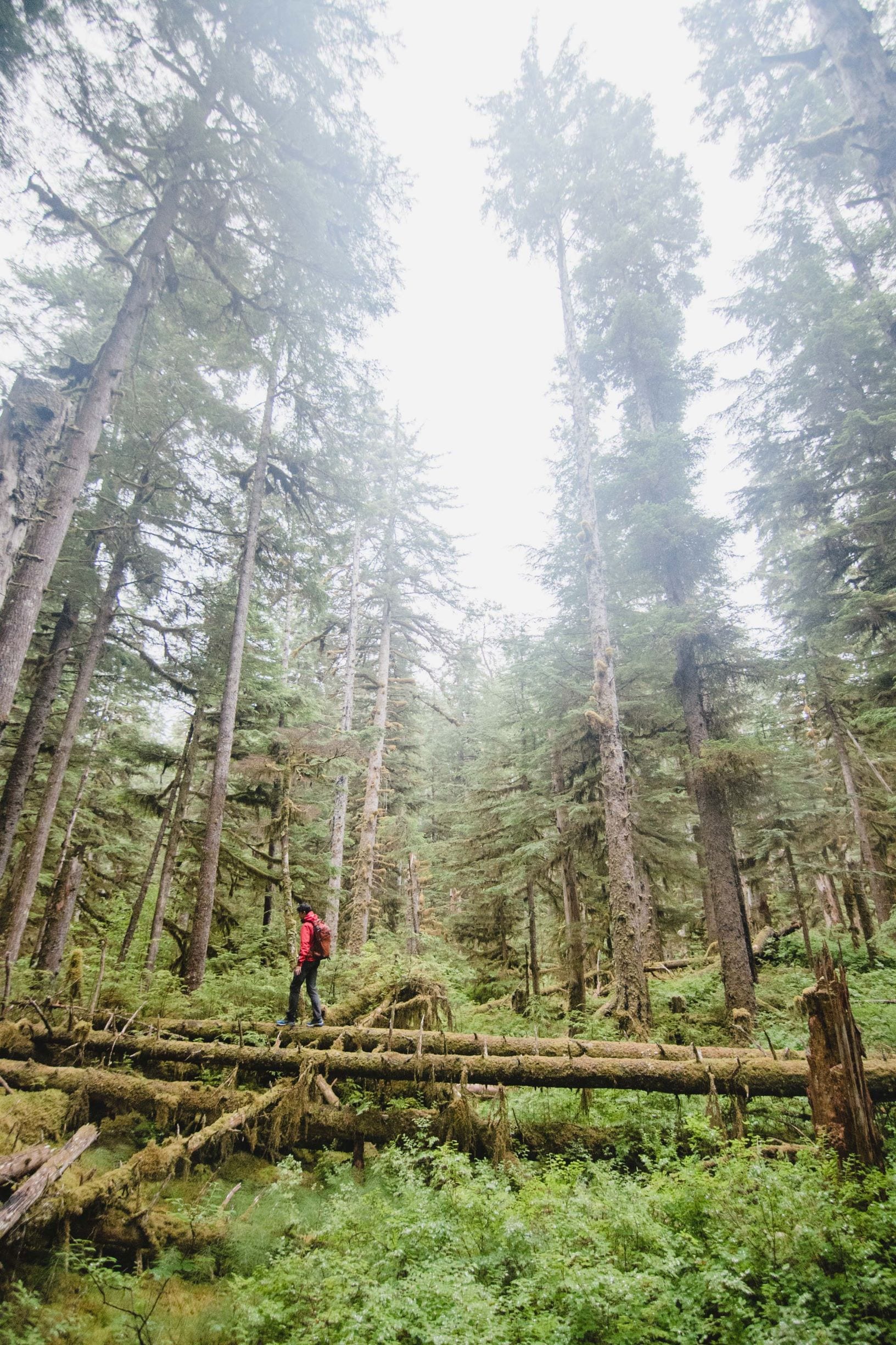
Marco takes the highway. Near here, we all found “sit spots” away from one another to sit and listen and write. The rain dripped at times, and a family of noisy sharp-shinned hawks came through on a hunting/feeding mission. A pile of varied thrush feathers lay in the moss near me, probably a recent meal for this family.
